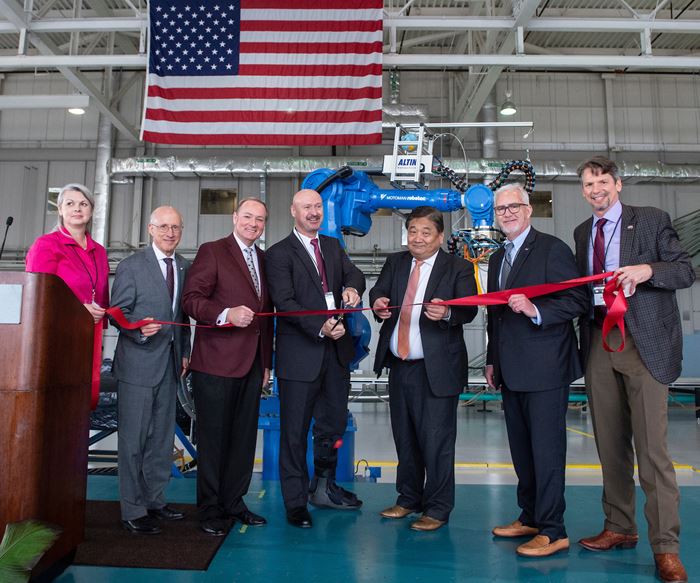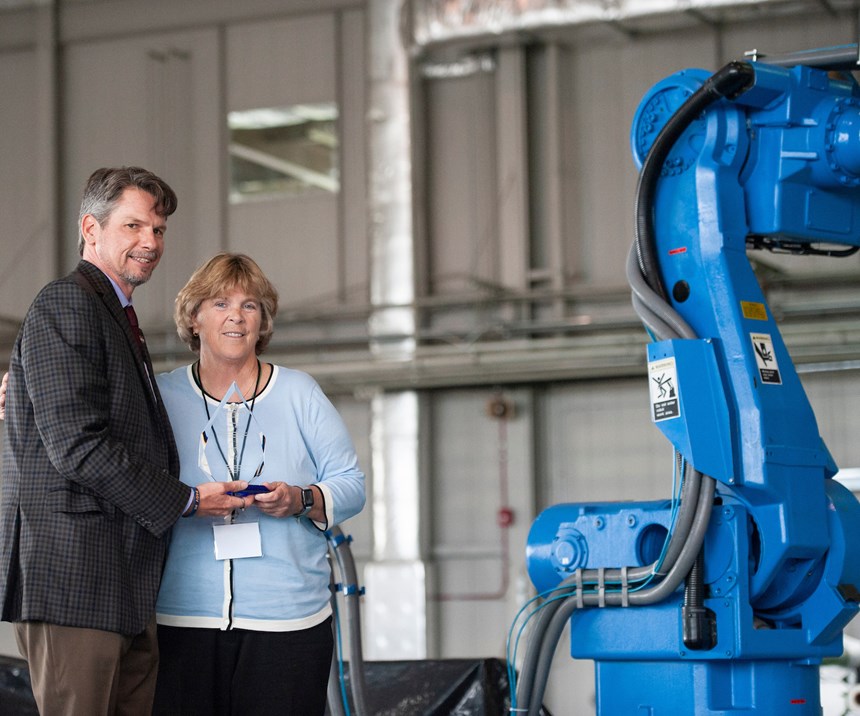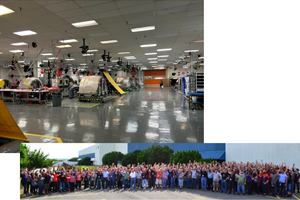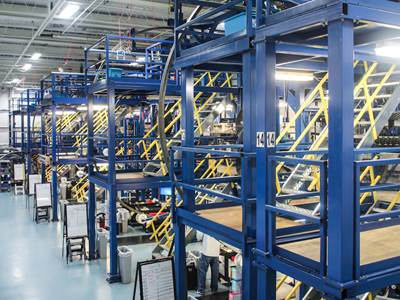Mississippi State opens Marvin B. Dow Stitched Composites Development Center
The new research center, built in partnership with Boeing, will work with stitched, resin-infused composites to advance composite materials for aerospace.
Mississippi State University (MSU; Starkville, Miss., U.S.) recently celebrated the opening of a new research center intended to help the university advance the fields of composite materials and aerospace.
MSU hosted a grand opening ceremony for the Marvin B. Dow Stitched Composites Development Center at the MSU Advanced Composites Institute on Friday, April 12. During the event, MSU President Mark E. Keenum noted that the university’s research and development activities, often carried out with government and industry partners, have a substantial impact on Mississippi’s economy, leading to the development of new companies and new jobs.
Boeing (Chicago, Ill., U.S.) selected MSU to create a stitched, resin-infused composites lab that will advance the development of composite structures technology. Through an agreement with the university, Boeing donated lab equipment and provided MSU researchers with additional resources to support the Advanced Composites Institute.
“This center matches so well for the vision that we have for the university in terms of strategic partnerships,” says David Shaw, MSU vice president for research and economic development. “Our best days for collaboration are definitely in our future, rather than in the rearview mirror.”
The center is named after pioneering NASA scientist Marvin B. Dow. While working at NASA Langley Research Center, Dow worked with McDonnell Douglas, which is now part of The Boeing Co., to develop advanced stitched composite designs and manufacturing methods. At the opening ceremony, MSU presented Dow’s daughter, Heather, with a plaque recognizing her father’s rich legacy in the field and his original vision to conduct stitched composites research that will revolutionize the way future aircraft are designed, built and flown.
“Marvin Dow’s ideas have been a game-changer,” says David E. Bowles, director of the NASA Langley Research Center in Hampton, Va., U.S. “When you look at composites today, they really have transformed the aerospace industry.”
Housed at MSU’s Raspet Flight Research Laboratory in Starkville, the Advanced Composites Institute continues the land-grant university’s legacy of innovation in aerospace and materials research and development. ACI is led by director Dennis Smith, head of the MSU Department of Chemistry. With a focus on applied inter-disciplinary research, the center has affiliated faculty members with expertise in chemistry and chemical, mechanical and aerospace engineering. The collaborative environment provides distinct opportunities for graduate and undergraduate students, and enables MSU to work with partners in government and industry to develop new knowledge in composites research and solve complex problems.
The Advanced Composites Institute is a member of the Federal Aviation Administration’s Joint Advanced Materials and Structures (JAMS) Center of Excellence. The center works to maintain a global leadership position in the field of composite materials science, engineering and manufacturing — including resin chemistry and infusion and stitched composites, followed by high temperature cure of large parts in ACI’s new state-of-the-art oven, which measures 50 feet by 20 feet by 10 feet. ACI supports economic development by boosting collaboration, technology transfer and entrepreneurship, in addition to serving as a workforce development and training center for strategic partners and suppliers.
“It’s an honor to have Mississippi State as part of our JAMS Center of Excellence, and we look forward to building on our relationship in the future,” says Ken Knopp, FAA manager of structures and propulsion research.
Raspet Flight Research Lab has served as an incubation space for multiple composite manufacturers that now have permanent Mississippi homes. The lab has served as an incubator for Mississippi-based manufacturing operations of several aerospace companies, including GE Aviation, Airbus Helicopters, Stark Aerospace and Aurora Flight Sciences, a Boeing Company.
Related Content
Reducing accidental separator inclusion in prepreg layup
ST Engineering MRAS discusses the importance of addressing human factors to reduce separator inclusion in bonded structures.
Read MoreFACC Academy begins training, onboarding operations
FACC’s newly launched training platform will address skilled aerospace worker shortages head on, offering more than 250 specialized training courses for its entire workforce.
Read MoreASCEND program update: Designing next-gen, high-rate auto and aerospace composites
GKN Aerospace, McLaren Automotive and U.K.-based partners share goals and progress aiming at high-rate, Industry 4.0-enabled, sustainable materials and processes.
Read MoreBelzona opens fifth European SuperWrap Training Centre
Global training facilities provide intensive, first-class installer and supervisor training for proper use and application of Belzona composite pipe and tank repair systems.
Read MoreRead Next
Plant tour: A&P, Cincinnati, OH
A&P has made a name for itself as a braider, but the depth and breadth of its technical aptitude comes into sharp focus with a peek behind usually closed doors.
Read MoreVIDEO: High-rate composites production for aerospace
Westlake Epoxy’s process on display at CAMX 2024 reduces cycle time from hours to just 15 minutes.
Read MoreCFRP planing head: 50% less mass, 1.5 times faster rotation
Novel, modular design minimizes weight for high-precision cutting tools with faster production speeds.
Read More
.jpg;width=70;height=70;mode=crop)
















.jpg;maxWidth=300;quality=90)










